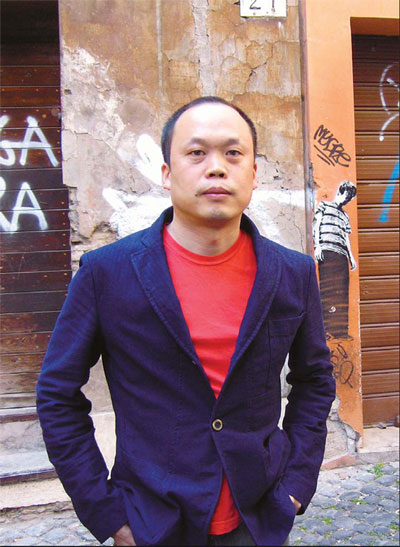|

Ji Yunfei is holding an exhibition of ink art paintings of the Three Gorges Dam. Provided to China Daily |
New York-based Ji Yunfei traces the history of the Three Gorges Dam project using an ancient art, Zhang Kun reports.
Ji Yunfei's latest exhibition at the James Cohen Gallery in Shanghai features a new series of paintings on Badong, a county in Hubei province near the Three Gorges Dam.
One of the most important pieces is a Chinese watercolor painting scroll, 3.14-meter long, presenting a panoramic scene of life near the Three Gorges Dam before villages were flooded to make way for the project. Ji made the painting into woodprints and one of the 108 copies of the print is on exhibition at the gallery.
Even though he began painting images of the Three Gorges Dam years before he actually went to Hebei province, the artist, who has lived in New York since the mid-1980s, was surprised to see things were so different from what he imagined.
This latest exhibition presents a new angle of art by juxtaposing modern themes and contemporary issues with traditional Chinese art.
Born in 1963, Ji was enrolled by the Central Art Academy when he was only 15. Bored with the systematic training while studying painting in college, the young rebellious student discovered the work of Picasso and Chinese masters like Chen Laolian, who lived in the 16th century.
"That was really great art, and Chen Laolian was so modern," Ji said, recalling his excitement after discovering Chen's work.
Ji's skills in line drawing excelled and, as traditional Chinese art became popular again, he turned away from Western oil painting to Chinese ink art.
In 1986 he moved to the United States and lived in New York City, but couldn't find inspiration.
"For quite a long time I couldn't produce anything that I was satisfied with," he said.
Emerging from his slump and lack of inspiration, he started to paint contemporary issues using traditional Chinese ink art. The sharp contrast of his subjects and his painting style was a refreshing change for art enthusiast.
In the late 1990s, he started to work on the Three Gorges Dam, reading about the dam project and its great impact. It wasn't until 2002 he had the opportunity to visit the area.
Ji remembers the bus trip vividly, with winding roads and cliffs, and passengers too busy smoking and watching movies to notice the spectacular views outside the bus windows.
He went around the reestablished villages in Yichang and chatted with the villagers, asking them where they were from. "Then I'd go to check out the old village on a map. Sometimes it has disappeared from the map," Ji said.
He was angered and disheartened that these small villages were virtually erased from China's memory.
"I can't help but think about China's modern history; we have been too eager to eliminate things, but human art and culture rely so much on inheritance."
Ji said talking with the villagers changed his understanding of the issue.
"I have a lot of respect for their endurance. They are tough people, with superb survival abilities."
He has also been inspired by the people's resourceful and creative nature.
"Some regions were trying to develop tourism and put on campy and commercialized ethnic group performances," said the artist.
Presenting his impressions and journeys to the area, his new exhibit is one that beautifully uses traditional Chinese ink art atheistics to depict modern issues.
If you go
Tuesday to Saturday, 10 am-6 pm; Sunday, 12-6 pm, until Aug 29
James Cohan Gallery Shanghai
1F, Building 1, Lane No 1, 170 Yueyang Road
021-5466-0825
(China Daily 08/13/2010)

